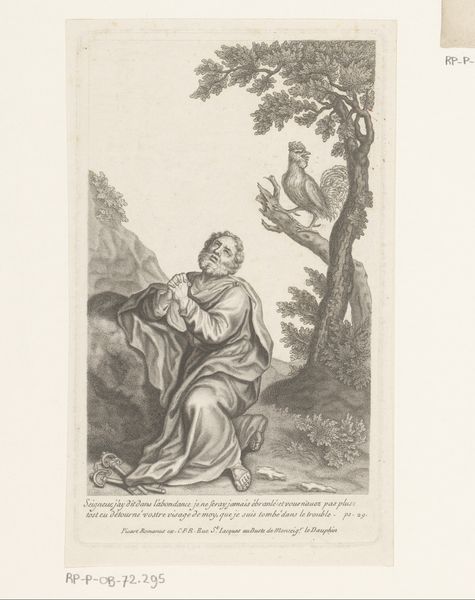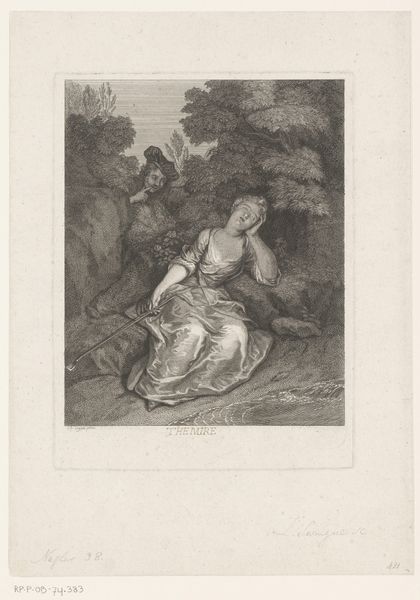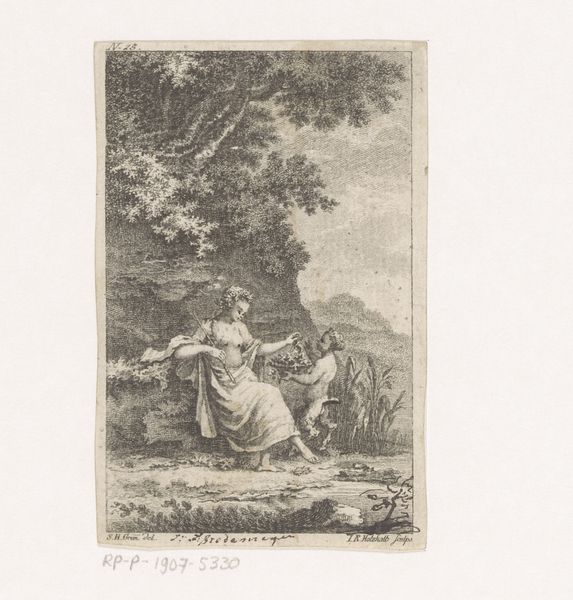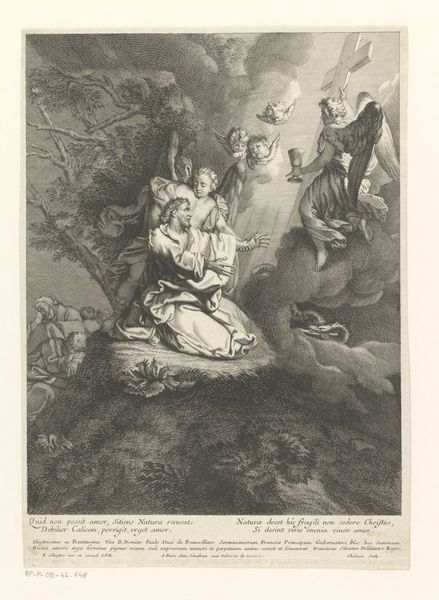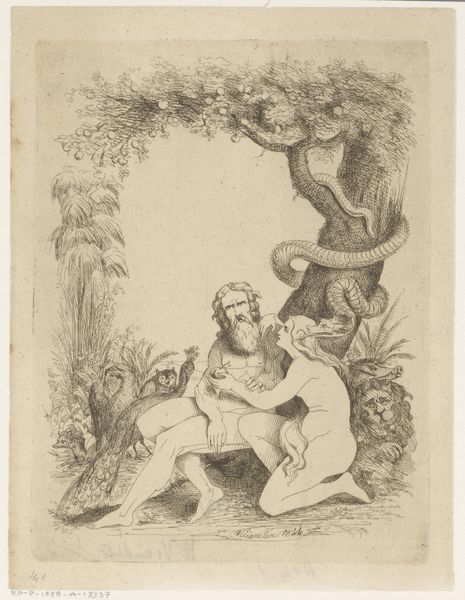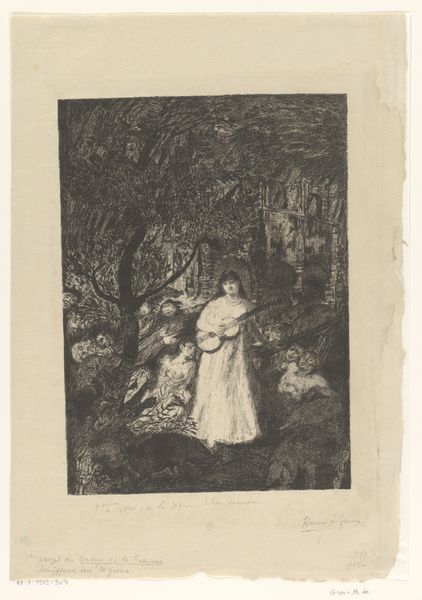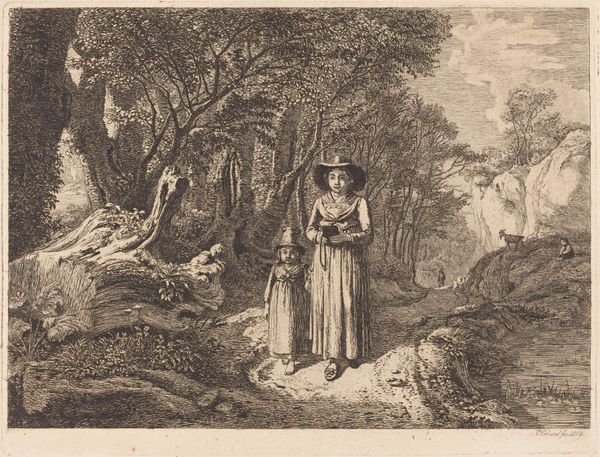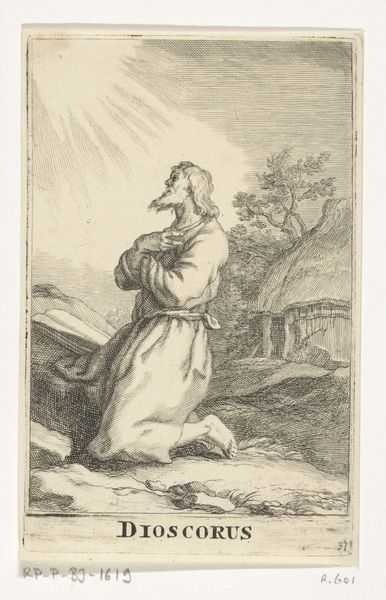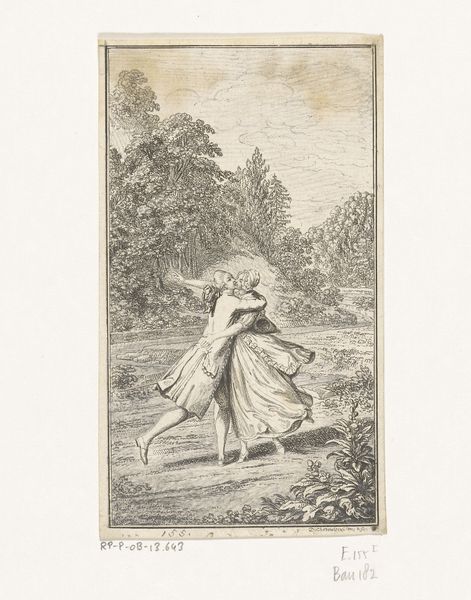
#
pencil drawn
#
photo of handprinted image
#
aged paper
#
toned paper
#
light pencil work
#
ink paper printed
#
parchment
#
pencil sketch
#
light coloured
#
pencil work
Dimensions: height 364 mm, width 252 mm
Copyright: Rijks Museum: Open Domain
Curator: This is "Herderin met bloemenmand en herdersstaf in een landschap," or "Shepherdess with flower basket and shepherd's staff in a landscape," created by an anonymous artist after 1727. It currently resides here at the Rijksmuseum. Editor: The scene is quite charming! It possesses a bucolic innocence, wouldn't you agree? The composition directs our gaze right to the shepherdess, almost like she's center stage. Curator: Let's consider the material aspect. It's ink on paper, but there's an intriguing story in its production. Think of the socio-economic context: Who was making the paper? What were their lives like? Were women working alongside the artists producing the plates for these images? The work raises fundamental questions. Editor: Those are pertinent issues indeed, yet, let's observe how the subtle shading and light pencil strokes contribute to a rather ethereal mood. I'm especially captivated by how light falls on her face, lending it such serenity. Curator: Yes, the formal execution is indeed proficient. But looking closely, this idealized representation of a shepherdess can't be detached from its inherent labor exploitation. There is that very significant contradiction. It speaks volumes about 18th-century European social structures and romantic notions of pastoral life. What does the availability of materials imply about global trade networks at this point? Editor: I concede. Those industrial concerns undoubtedly impacted subject matter, but how fascinating to note that such delicate rendering gives shape to very potent realities. Did such an artist, perhaps unwittingly, weave critique and homage within such limited range of gray tones? The visual contrast enlivens thought as well as feelings! Curator: The image as a physical object itself speaks too. Toned paper ages, acquiring unique patina according the environment of place. How were printed artworks, then, part of commerce or visual propaganda in period materials? That the museum has catalogued such subtle history in fragile drawing makes visible broader range within industrial society. Editor: It's amazing how engaging with these drawings gives me, if ever fleetingly, different understandings of form's expressive ability and what human work gives them being in world—what you bring makes us look not away. Thank you.
Comments
No comments
Be the first to comment and join the conversation on the ultimate creative platform.
